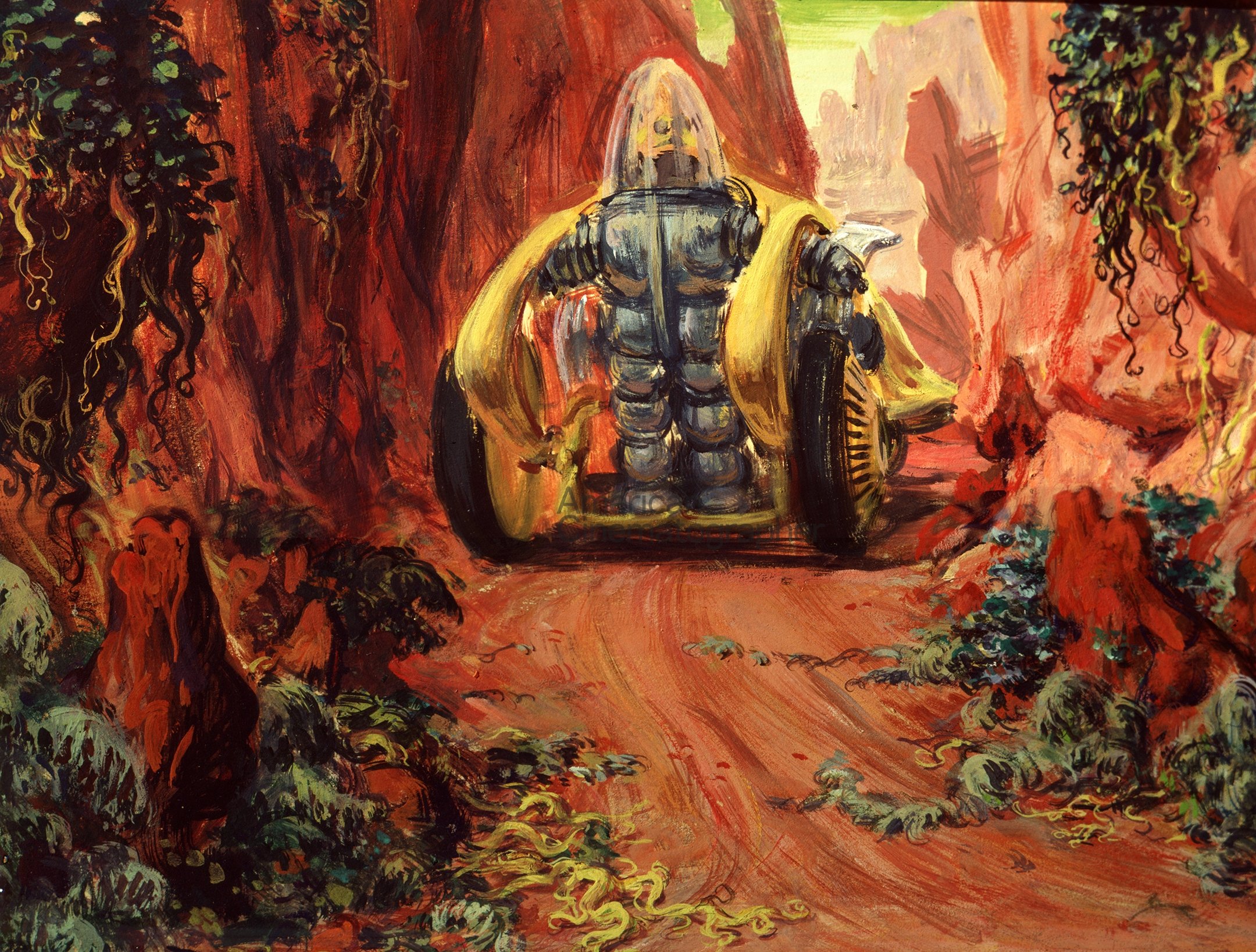
Forbidden Planet Sketchpad
A look at some of the pre-production design work that resulted in this striking sci-fi classic.
In his 1955 AC article about shooting the seminal sci-fi feature Forbidden Planet, director of photography George Folsey, ASC gave credit to the design team that was instrumental in planning the visuals in detail during prep.
“More than two years of technical research was undertaken on the production by the studio before it was turned over to producer Nicholas Nayfack and director Fred Wilcox,” Folsey noted. “But research did not stop here. Actually, the important pre-production planning began when we started to visualize the sets and the action from the camera viewpoint. With a completely new subject and a locale virtually dreamed up out of fantasy, the production posed a fresh new challenge, photographically.”
Largely responsible for this effort were supervising art director Cedric Gibbons and art director Arthur Lonergan.


Gibbons, who designed the Academy Award statuette, earned 39 Oscar nominations and won 11 times for his work, with credits including The Wizard of Oz, An American in Paris, Gaslight and Pride and Prejudice.
Born in New York City, Lonergan was an art director and painter whose other feature credits include Robinson Crusoe on Mars, The Errand Boy, M*A*S*H and Beyond the Valley of the Dolls.
At the top of this page is design painting by Mentor Huebner depicting the imaginative character Robbie the Robot driving a futuristic vehicle. A production illustrator who did storyboards, production art and creative concepts, his other feature credits include King Kong (1976), Blade Runner and Francis Ford Coppola's Dracula.
Below is a curated collection of initial concept sketches that helped result in the look and feel of Forbidden Planet, featuring illustrations of the film’s novel “saucer” spaceship and Jeep-like vehicle, the estate of mysterious scientist Dr. Edward Morbius, the alien Krell laboratory, and the invisible “Id” energy creature that attacks our heroes.
Some of these ideas came to fruition, while others were dead ends on a creative level but suggest how the final concepts realized for the film came to be.
Saucer Sequences







Morbius’ Lair



The Krell Lab


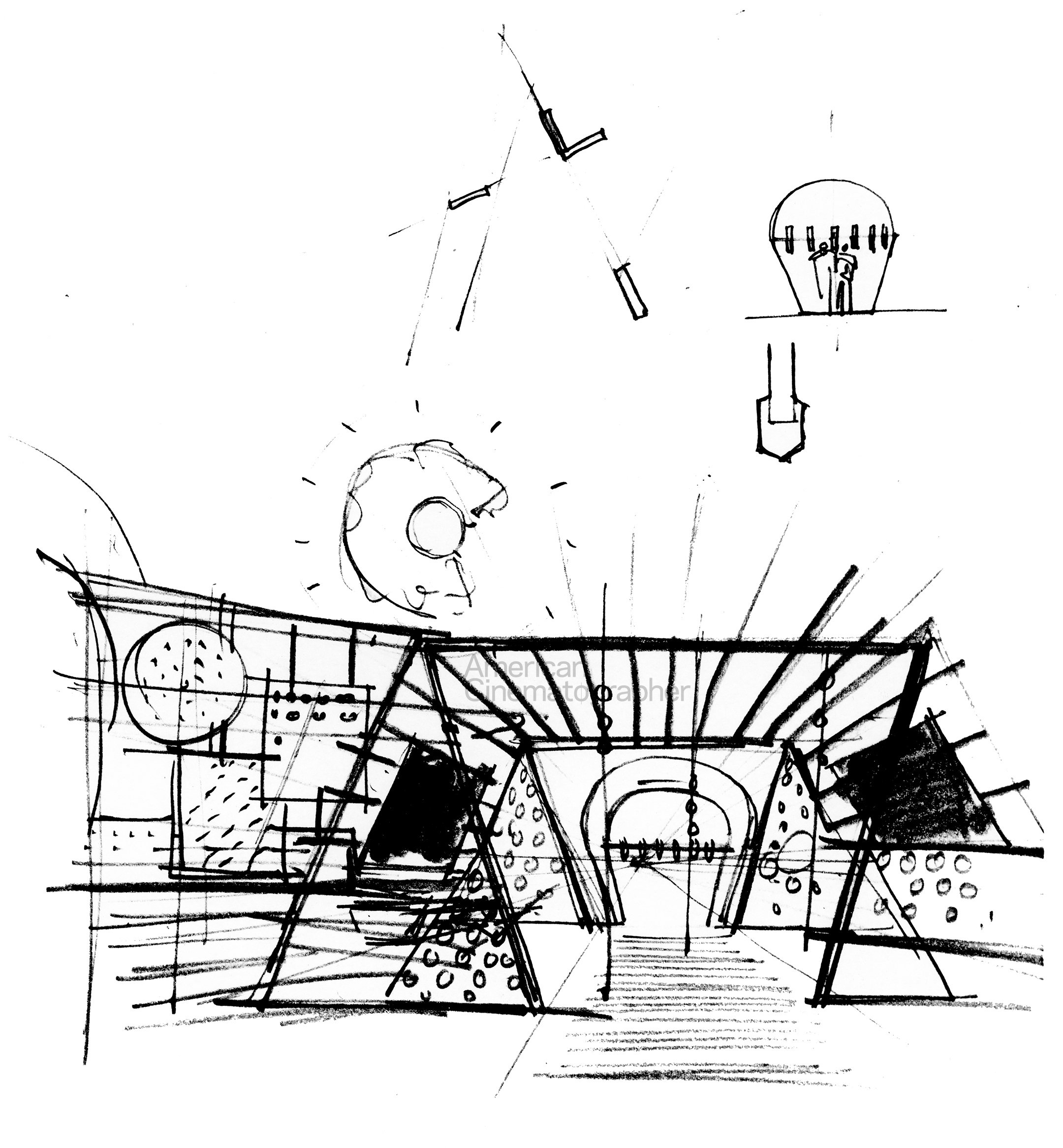

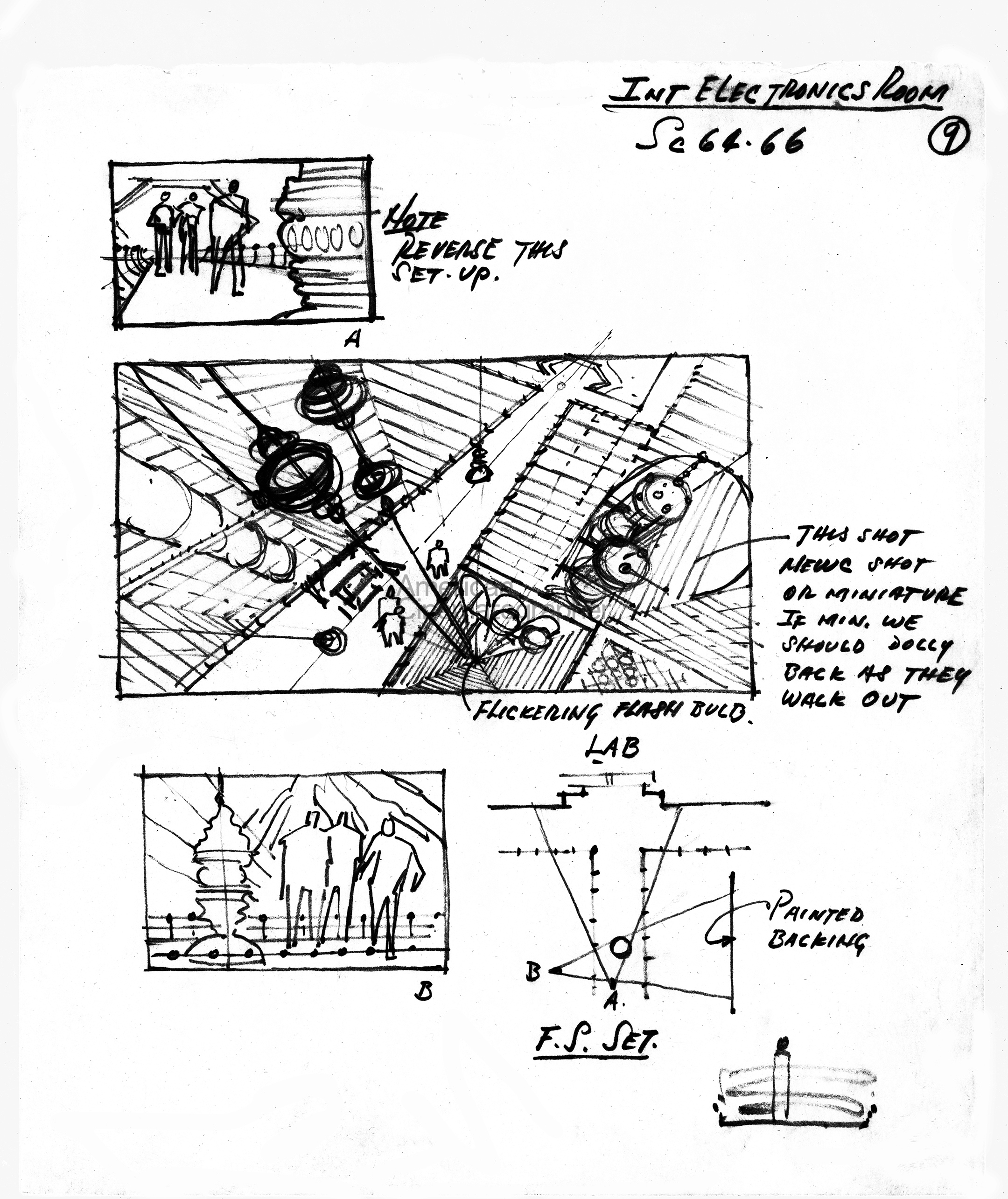

The “Id” Creature


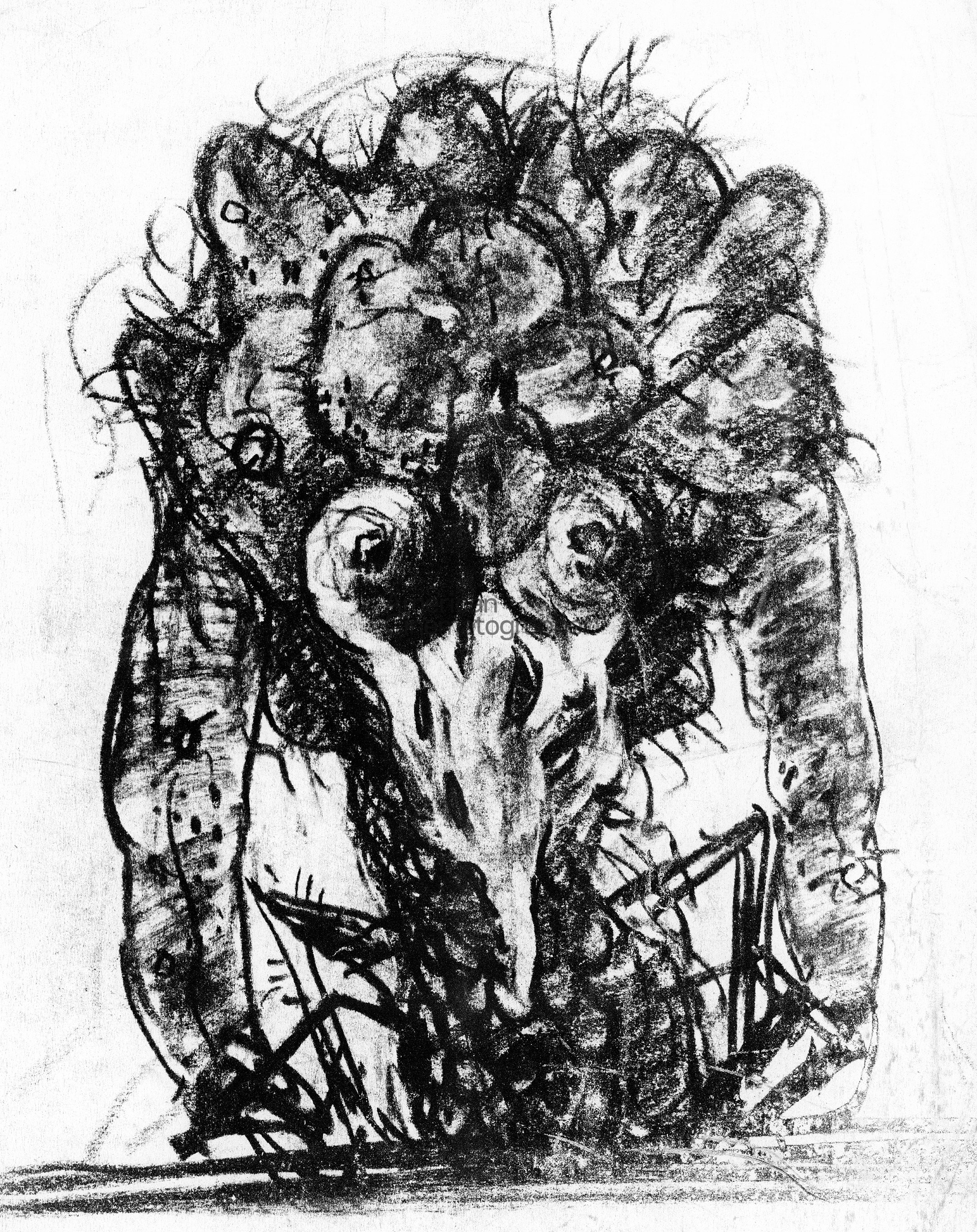




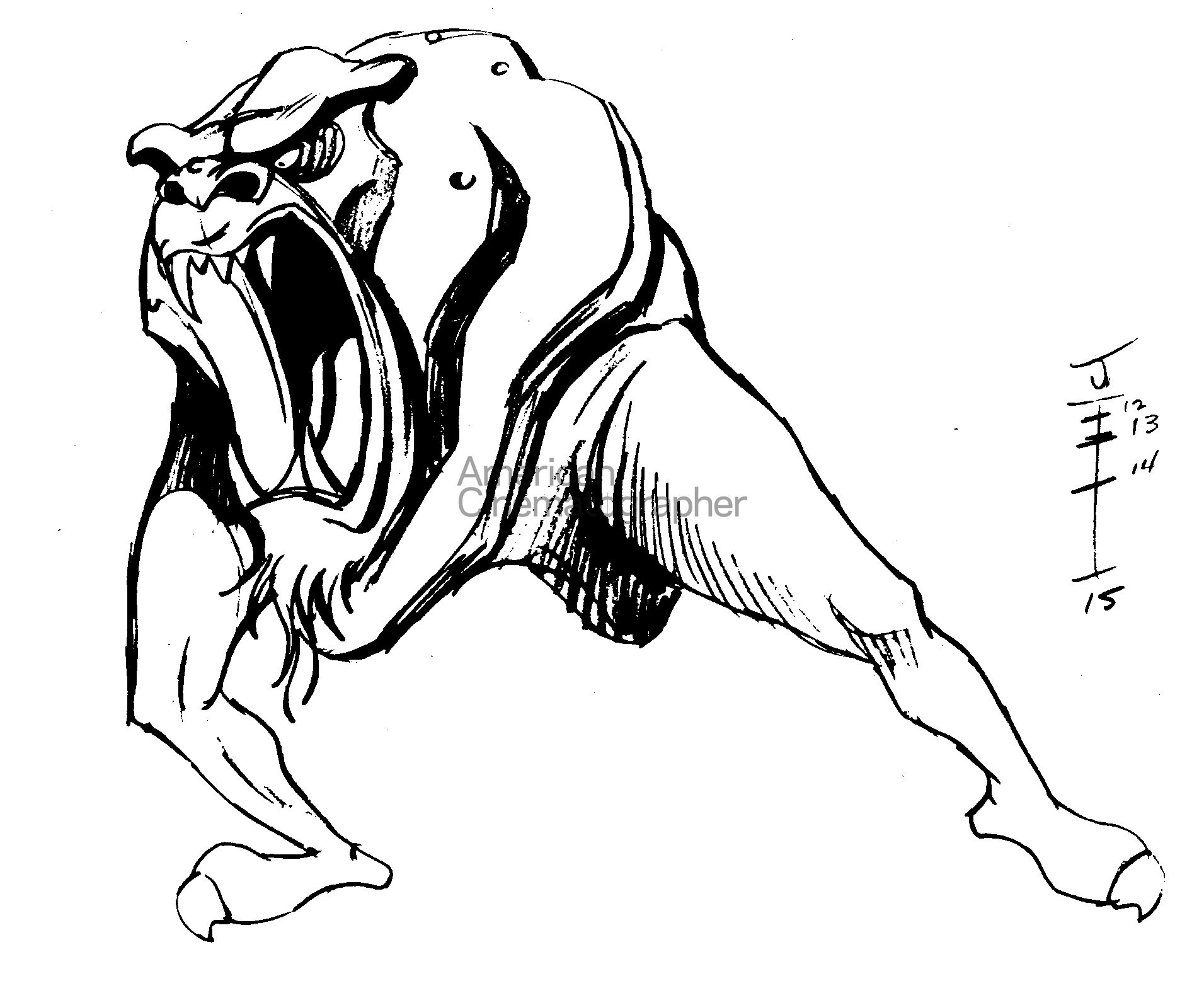


Cinefantastique magazine offered a very detailed report on the design of Forbidden Planet in their Vol. 8 No. 2 issue, published in 1979.






